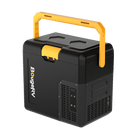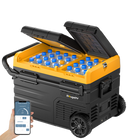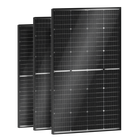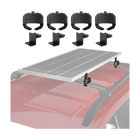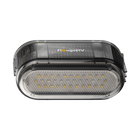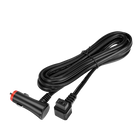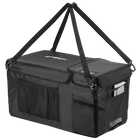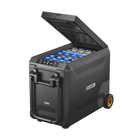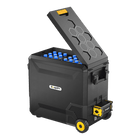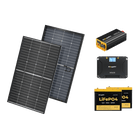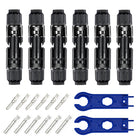What is Boondocking? The Best Boondocking Guide

For many campers, RV travel is about enjoying freedom in nature and finding inner peace amidst the beauty of the outdoors. Some campers prefer to enjoy the outdoors at traditional RV parks, which, after all, provide some of the necessary equipment and free Wi-Fi. In contrast, others choose boondocking to enjoy freedom.
What is Boondocking?
Boondocking is an adventurous journey taken to distant places far away from home, usually to the wilderness, to experience a truly natural environment. Boondocking is more native to the Philippines and the United States than other countries of the world.
It's done by camping in an undeveloped open space or mountain top in which you might decide to camp alone at the location or with fellow campers. It also usually means that you are camping in a non-designated campsite - no camp host, no campsite number, and no picnic table. So the problem with boondocking is that there are no water or electricity hookups.
As mentioned above, boondocking is a way to camp for free. Once you decide to go boondocking, you have to do some preparation beforehand, as we'll explain in this article.

How to Prepare and Guide Yourself for Boondocking
Pack essentials: these include food, water, lighting equipment, a first aids box, warm clothes, and so on. Also, gas up your RV and carry more in a jerry can to ensure it will take you all through the journey.
Know a thing or two about fixing common car problems: Should in case your RV breaks down in an isolated location, you may need to fix it yourself.
Tell your friends and family about your boondocking trip: One or two people must know about your trip to a strange location.
Ascertain your health condition before you go: a lot of factors may cause health emergencies when boondocking, including the weather. Be sure of your health condition before you leave for boondocking.
Make an alternative source of communication: some locations have a bad network, making communication a challenge. If possible, get a satellite phone.
Research the destination: there is a thing or more that you need to know about the location you are visiting. Some of the information is important. Research the location and gather the right information to help you make informed decisions.
Free camping sites have rules: Ensure you adhere to the rules governing the place.
What Locations Are Available for Boondocking?
Before boondocking, you should be clear on one thing: not all wilderness locations can stop RVs, as local federal land laws restrict some, so make sure you park your RV legally before doing so.
If you have decided to camp in a specific area, you can find the BLM regional office and give them a call. Generally, the park rangers will provide you with information on where you can camp and how to reach your destination safely. There are three central locations where you can boondock.

1. Boondocking on public land
When choosing to boondock on public land, pay attention to whether local signs do not allow camping, and the BLM will restrict some areas from opening to RV campers. Of course, many public lands will provide the location of the boondocking site.
So you can follow such directions to ensure that your RV is legally parked. You can also prepare a detailed map of federal lands for yourself to have a more comprehensive idea of where you can boondock.
2. Dispersed camping
There is another form of boondocking, and that is dispersed camping on public land. Dispersed camping refers to living in the wild outside of the established campground. Agencies such as the National Forest Service and Bureau of Land Management (BLM) allow dispersed camping on specific mats.
As for the particular locations of dispersed camping, you can find sites on Campendium or contact the governing agencies directly for more information. It is important to note that once you have found a place to disperse camping, please follow the Boondocking principle: leave no trace.
3. Parking lot
Due to the unpredictability of the weather and some unexpected conditions, spending the night in the middle of a parking lot may also happen on your way to Boondocking.
You may stay in the parking lot of Walmart, and some RVers plan to stay overnight at Walmart for several days. In addition to Walmart, companies like Costco, Cracker Barrel, Kmart, and Flying J Travel Centers allow RV boondocking. You can call ahead and ask for companies on your way or take a closer look at the boondocking app, which we recommend below.
What Do You Need to Be Aware of When Boondocking?
Pay attention to the weather forecast
Even if you only want to stay in the wilderness for one night, it's essential to check the weather forecast before going boondocking. Generally speaking, a temperature of 40-70 F is ideal.
In addition, if you encounter a rainy day while traveling, the rain may flood or wash away the passageway, and a sudden mountain snowstorm may trap you, so it is crucial to note the weather forecast of the campground while traveling.
Evaluate the driving time
If you want to try boondocking for a few days, a week, or more in a row, consider your resource needs to ensure that your RV can continue to meet your survival needs in the event of water and power outages.
Also, the maximum parking limit on most public lands is two weeks is illegal to stay too long. If you are a boondocking novice, you can choose to hang out overnight and not need much preparation.
Off-Grid Power and Energy Storage Equipment
First of all, you need a battery to be able to meet your boondocking when daily electricity needs. This battery can continuously keep working.
Many campers in the electrical energy reserves have chosen to use BougeRV's portable battery and long battery life to make these camper's wilderness experience more profound.
There are also many RVers who choose BougeRV solar panels and install large off-grid solar systems in their RVs, which allow them to walk with little need for additional generators.
Of course, you can also choose a battery and inverter as the power supply system. This combination also requires the use of a large-capacity battery to ensure that it can power essential equipment such as laptops.
If you look at the long-term benefits and use of the results, it is still recommended that you choose BougeRV's solar kit system, which can fully meet your daily electricity needs.

The safety of RV docking
Before you leave, check with your local friends or park rangers and communicate with them about your plans, including understanding the rules for parking your RV in local public sites and where you plan to stay for a few days.
When you stop your RV, in addition to the weather issues mentioned above, you also need to consider whether there are any ferocious animals around, such as large bears.
No traces left
As we all know, the principle of boondocking is "leave no trace," which is the principle that all boondocks should adhere to. You can leave slight tire tracks, but don't cut down trees or clear bushes. You should do your best to leave everything as it is, don't change the original look of the places you visit, it is your responsibility to take care of these places, let's take away only memories and leave only footprints.
Locations you can consider for your boondocking
South Dakota - Buffalo Gap National Grassland: This location is near Wall. It is made of wonderful wide open spaces and packed with local wildlife, making it a wonderful spot for boondocking.
Blankenship Bridge: This location is close to Columbia Falls in Montana. It's a nice spot for boondocking. Blankenship Bridge is a dry camping area with no amenities except a vault toilet which is located across the bridge.
California - BLM Land South Of Joshua Tree National Park: this place is also a nice spot to boondock. It offers beautiful desert scenery with wide open spaces.
Oregon - Cook's Chasm: If you are a lover of nature and derive pleasure from boondocking near water, Cook's Chasm is the spot for you to consider. This spot offers amazing sounds of crashing water waves you would love to experience. The place is near Yachats, the coastal region of Oregon.
Utah - Valley of the Gods Roads: This boondocking place will have your adventurous desire met when you have amazing views of natural wonders. This boondocking spot is near Mexican Hats, Utah, and, indeed, a place to behold for boondocking.
Utah - Canyonlands National Park: The roads around this national park are wonderful places for boondocking. Due to the growing popularity of Moab, a town near the national park, the number of tourists visiting Canyonlands National Park is on the increase. However, you may also consider boondocking in this wonderful place.

Boondocking is available on the program and website
The following sites are a list of interesting resources for boondocking that can help you find boondock locations reasonably and legally and can also give you some more detailed advice.
US Public Lands App
Developed by RV blogger Technomadia, this app is dedicated to helping camping enthusiasts find BLM and US Forest Service lands so you can camp there for free. The app, currently priced at $3, provides detailed information about public lands and how to know if you're accidentally trespassing on private land.
Allstays App
This app, currently priced at $10, keeps up-to-date boondocking information and provides you with boondocking sites that are more economical, as well as corporate parking lot camping sites that allow overnight stays, such as Walmart, Kmart, Lowe's, and other commercial parking lots that allow overnight stay.
Boondockers Welcome
Joining Boondockers membership allows you to find more fellow Boondockers, and you can drive one RV together or take multiple RVs out to enjoy nature. The annual membership fee for the app is $50, and by joining, you become mooch docking, a term that means you have the possibility of boondocking on a private campsite, and the private campsite landowner will give you something to welcome you.
Campendium
This site incorporates a huge database of specific details about different campsites, such as tourist reviews, fee details, and high-resolution photos, and you can also filter the search box to find free campsites. Reviews under each campsite will record the latest pricing, navigation maps, and some tips. Boondockers are advised to use them when communicating with the BLM.
Benefits of boondocking
You avoid noise: a typical camping in an RV park will have your experience mixed with noise due to the presence of other campers at the park. On the other hand, when you boondock in a lonely location, you enjoy your moments without noise from the surrounding.
You pay for no parking lot, unlike parking at RV Parks: RV parks have their charges for parking your vehicles, and it goes per night. However, when you boondock at a free location, it costs you nothing to park your RV.
Fascinating wilderness adventurous experience: many tourists have testified about the experience, and it's usually what they look forward to more.
It reduces vacation expenses: Boondocking costs far less an amount if you compare it with going for a standard camping tour.
It's fun boondocking: this type of camping creates a different experience entirely for campers, and it's what is considered fun.
Plenty of space for your usage: If you have tried an RV park before, you'd understand you have only a limited space to stay. However, boondocking freely in an open space leaves you with no limited space as you have the whole place to play with.

Boondocking starts now!
Once you understand the definition of boondocking, it's time to start planning your boondocking trip! If you're new to the RV world, you can begin preparing your boondocking gear, and we'll also be coming out with a guide to boondocking 101 essentials just to make your boondocking more memorable.
If boondocking still sounds intimidating, you can follow BougeRV's guide on camping. The BougeRV team is dedicated to making the experience more enjoyable for outdoor enthusiasts. From portable refrigerators to solar panel production, we're always working on it.







